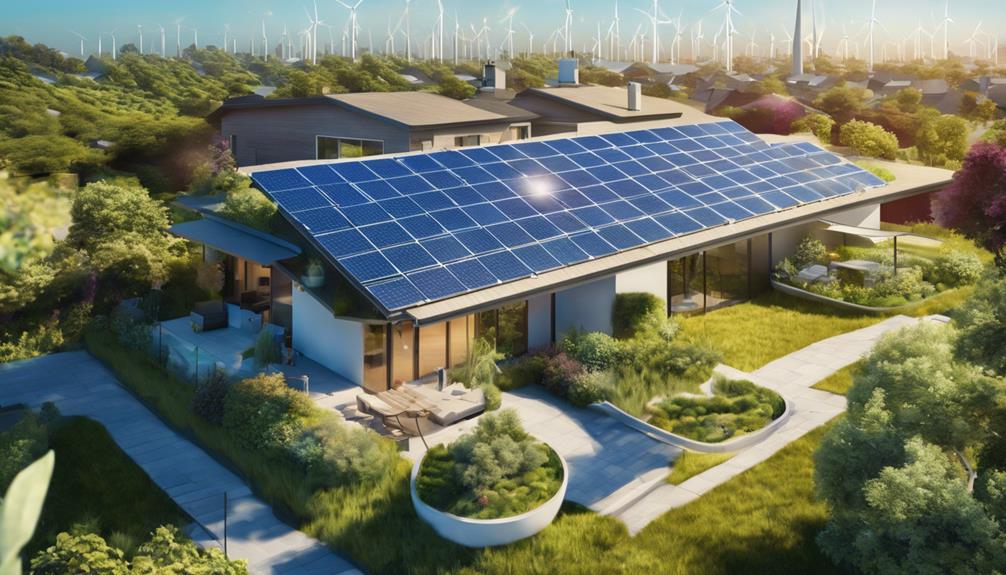
In the quest for sustainable energy solutions, vertical solar panels are emerging as a transformative technology. While traditional solar panels have dominated the market for years, vertical designs offer unique advantages that can maximize the efficiency of solar energy capture. In this blog post, we will explore the benefits, applications, and future potential of vertical solar panels, allowing you to understand why they are becoming increasingly popular in the realm of renewable energy.
Understanding Vertical Solar Panels
Vertical solar panels are designed to be installed upright, as opposed to traditional solar panels that are typically mounted horizontally on rooftops or ground mounts. This innovative approach allows for greater flexibility in installation, enabling vertical solar panels to be placed on building façades, balconies, or other vertical surfaces. The concept of vertical solar panels is not just about aesthetics; it aims to enhance energy capture in urban environments where space is limited and sunlight exposure can be challenging.
Advantages of Vertical Solar Panels
One of the primary advantages of vertical solar panels is their ability to maximize sunlight exposure in urban settings. Buildings often cast shadows that can hinder the performance of horizontal panels. By installing vertical solar panels, energy efficiency is improved as they can be positioned to capture sunlight from different angles throughout the day. Additionally, vertical panels can reduce the heat island effect in cities by providing shade to walls and sidewalks, contributing to cooler urban environments.
Moreover, vertical solar panels can be more aesthetically pleasing than traditional solar installations. They can be integrated into the architecture of buildings, enhancing their design while providing renewable energy. This visual appeal can make solar energy more acceptable to homeowners and businesses, leading to increased adoption rates.
Applications of Vertical Solar Panels
The versatility of vertical solar panels opens up a wide range of applications. In urban areas, they can be installed on skyscrapers, residential buildings, and public structures to harness solar energy without taking up valuable ground space. Additionally, vertical solar panels can be utilized in agricultural settings, such as vertical farms, where they can provide energy for indoor farming operations while minimizing land use.
Another interesting application is in transportation. Vertical solar panels can be integrated into bus stops, charging stations for electric vehicles, and even sound barriers along highways. This integration not only generates clean energy but also promotes awareness of renewable energy sources among the public.
Environmental Impact of Vertical Solar Panels
The environmental impact of vertical solar panels is significant. By capturing solar energy, these panels help reduce reliance on fossil fuels, contributing to lower greenhouse gas emissions. The more vertical solar panels are adopted, the more communities can transition to clean energy sources, which is crucial in the fight against climate change.
Furthermore, vertical solar panels can contribute to energy conservation. By generating electricity on-site, buildings can reduce their energy consumption from the grid, leading to lower energy bills and decreased demand on utility companies. This local energy generation is especially beneficial during peak demand times when energy costs are typically higher.
Challenges in Implementing Vertical Solar Panels
Despite their numerous advantages, vertical solar panels also face several challenges. One of the main obstacles is the initial cost of installation. Vertical solar panels can be more expensive than horizontal systems due to their unique mounting and structural requirements. However, many experts argue that the long-term savings on energy bills and the potential for government incentives can offset these upfront costs.
Another challenge is the maintenance of vertical solar panels. While they may be easier to clean due to their orientation, their placement on high-rise buildings can complicate the maintenance process. Ensuring safe and efficient maintenance routines will be essential for the longevity and performance of these systems.
Future Trends in Vertical Solar Panels
The future of vertical solar panels looks promising as technology continues to advance. Innovations in materials and design are leading to more efficient and lightweight solar panels that can be integrated into a variety of structures. Additionally, the development of building-integrated photovoltaics (BIPV) is allowing architects and builders to incorporate vertical solar panels seamlessly into building designs.
Moreover, the increasing emphasis on sustainability in urban planning is paving the way for more widespread adoption of vertical solar panels. Cities around the world are recognizing the importance of renewable energy sources and are implementing policies that encourage solar installations. As awareness grows, vertical solar panels are likely to become a common sight on urban buildings.
How to Choose the Right Vertical Solar Panel System
Choosing the right vertical solar panel system requires careful consideration of various factors. First, assess the available space and the amount of sunlight exposure the installation area receives. It’s important to consult with solar energy professionals who can evaluate your specific needs and recommend the best system for your situation.
Additionally, consider the efficiency ratings of different vertical solar panels and their compatibility with your building’s design. Look for panels that come with warranties and have a good track record in terms of performance. Finally, explore financing options, including government incentives and tax credits, to make the investment more manageable.
Conclusion: Embracing the Vertical Solar Revolution
Vertical solar panels represent a significant advancement in the renewable energy sector, offering a viable solution for urban environments and beyond. Their unique advantages, coupled with ongoing advancements in technology, make them an attractive option for homeowners, businesses, and municipalities looking to harness solar energy. As we move toward a more sustainable future, embracing the vertical solar revolution will be essential in maximizing our solar energy potential and reducing our carbon footprint. Whether you’re considering a vertical solar panel installation for your home or business, the time to invest in renewable energy is now.





